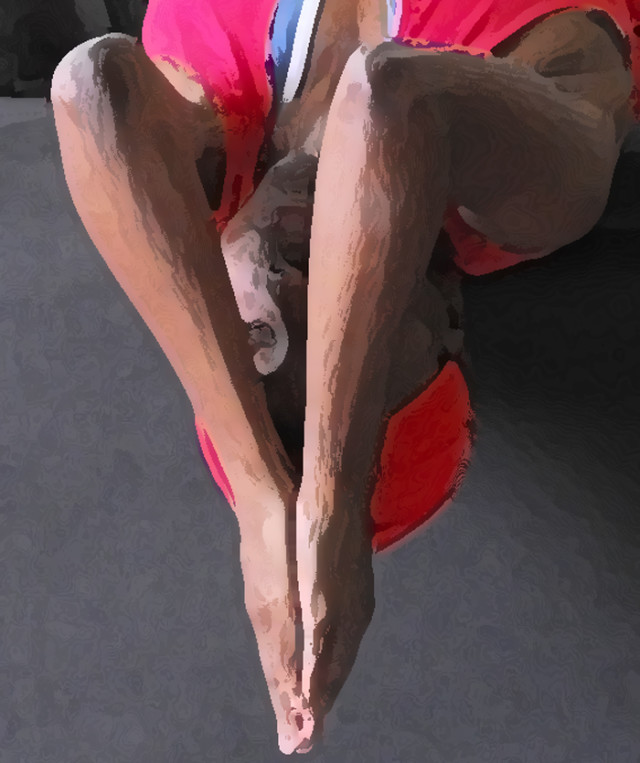I came across a testimonial on a website that was posted by a woman who claims to have shrunken her fibroids via Focused ultrasound surgery so I’ve been doing some research on the topic. The mayoclinic.org has a very interesting article on the topic of Focused ultrasound surgery for uterine fibroids. It provides useful information about the procedure. This post summarizes the Mayo clinic article. For the full article link scroll to the bottom.
Focused ultrasound surgery for uterine fibroids
What Is Focused Ultrasound Surgery?
Here is how the Mayo Clinic answers the question of what is Focused ultrasound surgery [for uterine fibroids]
Focused ultrasound surgery is a noninvasive treatment option for uterine fibroids — noncancerous growths of the uterus. A pelvic magnetic resonance imaging (MRI) scan is typically performed before treatment to determine whether you’re a good candidate for focused ultrasound surgery.
The takeaway from that definition→ not every woman will be considered a good candidate for focused ultrasound surgery. So what makes you a good candidate for focused ultrasound surgery? Or more to the point, what would make you not a good candidate? Digging further into the article I came across the following:
Although focused ultrasound surgery offers many advantages over other fibroid treatment options, it’s not the best option for everyone. It may not be a good choice for you if:
- You have multiple abdominal scars that make it difficult to find a safe path between the transducer and the fibroid
- You have many fibroids or very large fibroids
- You want to optimize your chance of a future pregnancy
I don’t have any abdominal scars and I have no interest in getting pregnant ever again. I do have multiple fibroids and very large fibroids; so I guess my chances of being considered a good candidate for focused ultrasound surgery will come down to the reputation of the clinic. I’d guess that a clinic for whom money is the primary interest might be more willing to take a risk than one with a little regard for ethical propriety. After all they will have my signature on a piece of paper saying I know the risks and accept them and that the clinic is not responsible if something goes unexpectedly wrong and I die. So why not take my money and attempt the procedure even while knowing I’m not an ideal candidate?
The point is, focused ultrasound surgery for uterine fibroids won’t be an option for everyone; but for those who are good candidates, does focused ultrasound surgery actually get rid of the fibroids?
The testimonial that I came across in which the woman was making the claim that she became fibroid free after undergoing focused ultrasound surgery, included before and after pictures. In the before picture the woman has a very large stomach. In the after picture her stomach was impressively flat; but from reading the Mayo Clinic article, it doesn’t sound as if you walk into a clinic with a belly full of fibroids, go under a machine, get a focused ultrasound procedure performed on you, and walk out with a flat “fibroid-free” stomach. It sounds as if it takes some time for the treated fibroid tissue to be completely removed from your body; and it does also sound as if the treatment does not safeguard against new fibroid growth.
Here’s how the Mayo Clinic article describes the procedure results:
Your body gradually and naturally absorbs the treated tissue over months and even years. This means that an ultrasound may show the fibroid still there. However, an MRI shows that the fibroid has been treated, and your symptoms reflect that improvement.
The majority of women experience significant improvement in the severity of their fibroid-related symptoms within the first six months after focused ultrasound surgery. Most researchers report that women continue to have symptom relief after three years of follow-up.
So it seems to be a gradual process; but I’m thinking that to gradually get back to my normal self over a few months or a few years is better than to still be in the same situation I’m in now five years from now. If I could qualify for this procedure I might be willing to try it. Only problem, I can’t afford it.
How much does it cost to get focused ultrasound surgery for uterine fibroids?
Apparently it costs upwards of $10,000 to get this procedure performed; and it’s not typically something your insurance will cover.
More on the subject of Focused ultrasound surgery for uterine fibroids
I came across another interesting article on the subject. This article was written for the New York Times by RONI CARYN RABIN. It was published back in 2007 so it’s entirely possible the information is outdated. Here is an excerpt from that article:
A little over a year ago, desperate for relief from uterine fibroids that made her menstrual periods last all month, Sharyn Sowell tried a new noninvasive procedure that uses focused high-intensity ultrasound beams to destroy the uterine growths. The treatment lasted a few hours, did not require general anesthesia and was so easy that she arose from the table and walked two miles immediately afterward. But though her symptoms subsided for a while, the improvement did not last. (full article)
Apparently Ms. Sowell was back to square one just six months after undergoing the procedure. Not a very heartening thought when you consider the cost of the procedure. Can you imagine saving up $10,000 to get a focused ultrasound treatment for your fibroids only to end up right back where you started after getting some brief relief?
Here is another excerpt from the same New York Times Article that gives some insight into the treatment procedure and addresses what actually happens to the fibroids during treatment:
The concept of focused ultrasound can be confusing, because the term calls to mind the low-intensity ultrasound waves typically used for diagnostic imaging.
With this procedure, high-intensity focused ultrasound beams are aimed to converge on a small target like a fibroid, heating it enough to destroy it, much as the sun’s rays can ignite a flame when focused under a magnifying glass.
The patient lies down on a table inside the magnetic resonance imaging machine with her belly in a pool of water. An electronic device in the water generates the ultrasound beams. The patient’s head is outside the machine, and she has to lie very still.
With the M.R.I. providing a three-dimensional map of the fibroids and organs, the physician can zero in on fibroids and destroy them with a blast of heat. When the image of the tissue changes color, the proper temperature has been reached.
The goal is to coagulate the tissue and destroy its blood supply, so it dies and shrivels up over time, said Dr. Phyllis Gee, medical director for the North Texas Uterine Fibroid Institute in Dallas, which uses the technology.
The fibroid is not removed, but changes consistency, Dr. Gee said, adding, “You’re turning a hard, dense tumor that can sometimes be calcified like a rock into something much lighter, like Silly Putty.”
Success depends on the degree to which the fibroid is deprived of its blood supply. (full article)
So all in all it seems this procedure is expensive and not guaranteed to provide lasting results. There are limited places where you can get it done; and if you have large fibroids your options become even fewer because, in all likelihood, only a corrupt clinic will go ahead and try the procedure on you anyway knowing that you are not an ideal candidate.
Focused ultrasound surgery for uterine fibroids isn’t something I can afford right now even if I wanted to try it; and the size of my fibroids right now, no reputable clinic would consider me a suitable candidate anyway. So it’s back to the drawing board for me.
Click here for the full Mayo Clinic article






























